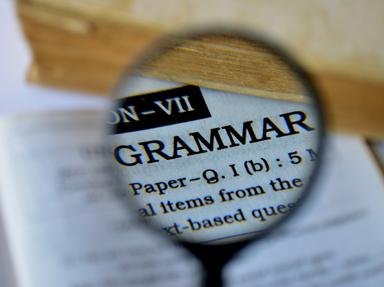Quiz Answer Key and Fun Facts
1. The semicolon is named as such because it is half-colon. What is the other half of this enigmatic punctuation mark?
2. Which of these are semicolons commonly used to separate?
3. Which of the following can follow a semicolon?
4. Which of these sentences is incorrect?
5. Which of these can you use a semicolon for?
6. Which of these words can NEVER follow a semicolon?
7. "I don't like pie. I ate that one." How can these sentences best and most logically be combined into one using a semicolon?
8. "The bird is rainbow colored, consequently, it has blue on it." Where would putting a semicolon make this sentence GRAMMATICALLY correct?
9. When you have a long numbered list such as the following, what are you able to do regarding semicolons?
Choose your answer if:
1) You are confident in your trivia-answering ability, and have been for some time,
2) You know the correct answer,
3) You have nothing to do but guess, or
4) You have actually read the question.
10. Alright, last question of the quiz! Which of these sentences is correct (and preferably true)?
Source: Author
erd_the_man
This quiz was reviewed by FunTrivia editor
looney_tunes before going online.
Any errors found in FunTrivia content are routinely corrected through our feedback system.

